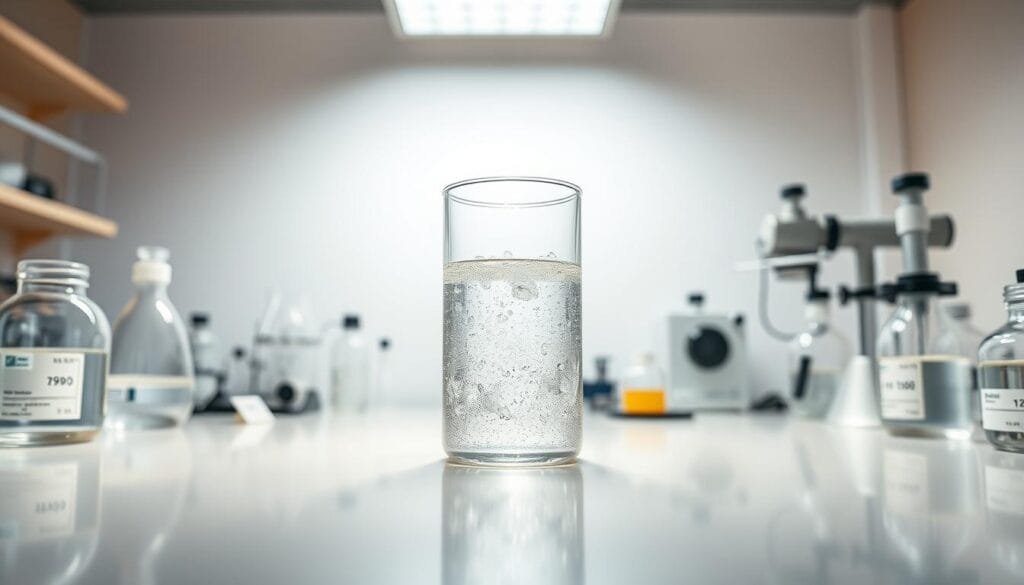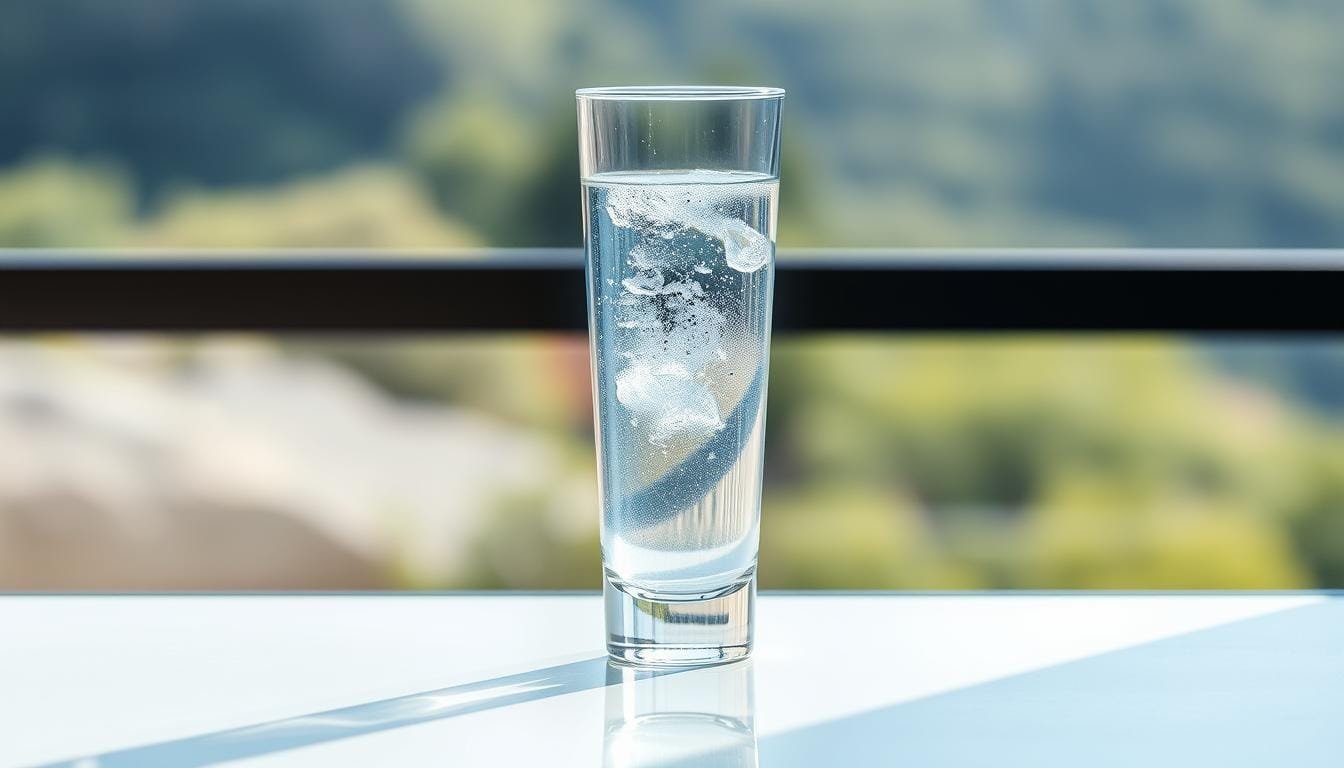Currently Empty: RM0.00
Curious if a simple shift in fluids can boost daily well-being? This short guide shows clear, friendly steps to fit hydrogen water into a compact routine. It opens with a gentle starting point: begin with one to two glasses and increase as comfort and activity allow.
Most research points to about 50–60 ounces per day (roughly 1.5–2 liters) as a helpful target for many people. Practical windows include a small serving on waking, 8–20 ounces before exercise, and one soon after to aid recovery.
Safety matters: moderate intake avoids over-hydration and keeps electrolytes balanced. In warm Malaysian weather, spacing servings across the day helps maintain steady hydration and supports the body’s energy and natural defenses.
For personal tips, readers may contact Wellness Concept on WhatsApp at +60123822655. Business hours are Monday–Friday 9:30 am–6:30 pm and Saturday–Sunday 10 am–5 pm.
Key Takeaways
- Start simply with one to two glasses and increase gradually.
- Aim toward 50–60 ounces as a general guide, adjusted for activity.
- Best timing: morning, pre-workout, and post-workout servings.
- Moderation reduces risk of over-hydration and supports health.
- Local climate makes a spaced routine helpful in Malaysia.
- Contact Wellness Concept on WhatsApp for tailored advice.
Understanding hydrogen water today: what it is, why it’s trending, and how it fits into a daily routine
Adding dissolved hydrogen gas to plain water creates a simple, portable wellness option many try. Hydrogen water is tasteless and calorie-free, so it fits into normal hydration habits without fuss.
People like this product because it promises mild health benefits while behaving like regular water. Most users sip it before meals, during work, and around workouts to keep the body steady.
“It felt easy to add to my schedule — the same moments they already reach for water.”
Start small: try one to two glasses, then see if increasing toward roughly 50–60 ounces suits your routine. In hot Malaysian climates, spacing servings throughout day makes staying hydrated more comfortable.
- Properties: tasteless, portable, non-caloric.
- Used like regular water and slipped into existing routines.
- Adjust time and amount so the body responds well over weeks.
| Use case | Suggested timing | Why it fits |
|---|---|---|
| Morning | On waking | Quick hydration and gentle start for the body |
| Pre-workout | 15–30 minutes before | Primes energy and supports endurance |
| Throughout day | Small servings every few hours | Maintains steady hydration without feeling full |
Key benefits that guide daily intake and timing
Practical benefits help shape daily timing: antioxidant support, eased inflammation, and better recovery after exercise.
Antioxidant properties: supporting the body against harmful free radicals
Antioxidant properties are a main reason people try this product. Research notes that regular intake at roughly 50–60 ounces can boost antioxidant capacity without overloading the system.
That action may help the body buffer harmful free radicals and reduce oxidative stress over time.
Anti-inflammatory effects and exercise recovery
Reports suggest reduced inflammation and less muscle soreness after training. Simple timing works best: a small serving before exercise (10–20 ounces) and one within 30 minutes after activity to support recovery.
Athletes who match servings to sessions often notice clearer benefits in endurance and post-session comfort.
Hydration, energy levels, and skin wellness
Steady hydration plus this enhanced drink can help sustain energy and support skin health. Visible gains usually come with regular use and sensible overall fluid balance.
- Benefits: antioxidant, anti-inflammatory, recovery support.
- Use cues: morning, pre-exercise, post-exercise.
- Track: energy, soreness, and skin for personal feedback.
| Benefit | Suggested timing | Expected effects |
|---|---|---|
| Antioxidant support | Morning or with meals | Lower oxidative stress, steady cellular support |
| Inflammation control | Pre/post exercise | Reduced soreness, quicker recovery |
| Hydration & skin | Small servings across the day | Improved energy, better skin appearance |
How many times a day should you drink hydrogen water?
Daily intake goals often balance simple habit steps with personal comfort and activity levels.
General daily range: start small, aim near 50–60 ounces
Begin with 1–2 glasses and watch how the body responds. Many build up toward about 50–60 ounces (roughly 1.5–2 liters) as a practical target.
Spread servings across the waking hours. Small pours before and after exercise help recovery without overfilling the stomach.
Listening to your body vs. replacing regular water
Hydrogen itself exits the body easily, so there is no strict limit on gas levels. The main risk comes from drinking too much fluid too fast.
- Anchor one serving in the morning, then add 1–3 servings near meals or workouts.
- Mix hydrogen water with regular water; let thirst, energy, and sweat losses guide intake.
- If fullness or frequent bathroom trips occur, lower amounts and try a gentler rhythm.
Practical habit: many settle on 2–4 serving times with ounces adjusted for climate, work blocks, and exercise. This keeps hydration steady and supports overall health without fuss.
Best times to drink for maximum effects
Timing servings around daily activities can sharpen benefits and keep hydration steady. A few small pours at set moments work better than gulping large amounts once.

Morning hydration boost on an empty stomach
On waking: 8–10 ounces helps raise fluid levels before coffee or breakfast. This can feel refreshing and set gentle energy for the morning.
Pre-workout priming for endurance and performance
Pre-exercise: 10–20 ounces taken about 30 minutes prior can prime the body for effort level. Studies and guides note this timing supports endurance and may reduce early fatigue.
Post-exercise recovery within 30 minutes
After training: A serving within 30 minutes aligns with known recovery windows. Fluids then help muscles regain balance and may lower inflammation level.
Evening and between meals: spacing intake throughout the day
Smaller pours between meals keep comfort high and avoid bloating. Many people link servings to routine cues—commute, meetings, or school pickups—to make the habit stick.
| Timing | Suggested ounces | Key benefit |
|---|---|---|
| On waking | 8–10 oz | Quick hydration and morning energy |
| Pre-workout (~30 min prior) | 10–20 oz | Priming for endurance and performance |
| Post-workout (within 30 min) | 8–12 oz | Recovery support and lower inflammation level |
| Between meals / evening | Small servings | Steady hydration throughout day and comfortable sleep |
Personalizing your hydrogen water consumption
Personal needs vary, so tailoring servings to age, weight, and activity works best. Start with one to two glasses and increase slowly toward the common target of 50–60 ounces if it feels comfortable.
Age, weight, and activity level: adjusting amounts and frequency
Older adults, younger adults, and teens have different hydration needs. Age guides how often to sip through the day.
Weight matters because larger bodies need more fluid. Scale serving sizes modestly rather than changing everything at once.
Activity level shapes frequency. Those training or working outdoors should add servings around exertion to cover sweat losses.
Health status and medications: when to consult a healthcare provider
People with metabolic syndrome or chronic conditions must be cautious. If a person takes medications, they should consult healthcare or a consult healthcare provider before making major changes.
Slow adjustments work well: add a small serving, then watch how the body responds over the next two days.
Climate and sweat losses in Malaysia: balancing hydrogen and regular water
In hot, humid weather, pairing hydrogen water with regular water helps replace salts and sweat losses. This keeps comfort high and avoids bloating from too much at once.
- Quick cues: darker urine or strong thirst means nudge intake up.
- Too much: bloating or sleep disruption suggests dialing back.
Safety, side effects, and quality considerations
Safe use depends on sensible pacing and attention to how the body responds. Most people tolerate hydrogen water well, but some report mild digestive discomfort, brief fatigue, or mood shifts that pass quickly.

Moderation matters: space servings through waking hours to keep sodium levels steady and avoid dilution. Rapid overconsumption of any fluid can lead to hyponatremia, so spreading intake reduces risk.
Practical tips and when to seek advice
- Sensible consumption means small pours at intervals; this supports steady hydration and comfort.
- Minor effects like bloating often ease after lowering the amount or shifting timing.
- Those with heart or kidney conditions must consult healthcare before changing routines.
| Concern | Advice | Why it matters |
|---|---|---|
| Fast intake | Spread servings | Prevents low sodium and dizziness |
| Medical conditions | Speak to a clinician | Medications and fluid balance interact |
| Product quality | Choose reputable brands | Ensures advertised properties and consistent levels |
Final note: hydrogen water may offer antioxidant support alongside regular water, but it works best within balanced habits. Track consumption and effects to find the right amount for the local Malaysian climate and personal goals.
Integrating hydrogen water into a Malaysian daily routine with Wellness Concept
Pairing servings with daily cues—commute, lunch, gym—helps this habit stick through the week.
Simple schedules: cups/ounces across meals, workouts, and workdays
Start with 8–10 ounces on waking. Small pours throughout day keep hydration steady in hot, humid weather.
On training days, add 10–20 ounces about 30 minutes before exercise and one serving within 30 minutes after. This supports energy and recovery.
On non-training days, place small servings mid-morning and mid-afternoon. Use regular water with meals if that feels more comfortable.
Contact Wellness Concept for guidance
For friendly, personalised help, message Wellness Concept on WhatsApp at +60123822655.
Business hours: Monday–Friday 9:30 am–6:30 pm; Saturday–Sunday 10 am–5 pm. Their team can match servings to shifts, school timetables, and traffic patterns so the plan fits real life.
| Situation | Suggested ounces | Benefit |
|---|---|---|
| On waking | 8–10 oz | Quick morning hydration |
| Pre-workout (~30 min) | 10–20 oz | Boost energy and endurance |
| Post-workout (within 30 min) | 8–12 oz | Support recovery and comfort |
| Between meals | Small servings | Steady hydration throughout day |
Conclusion
Small, repeatable steps let someone test benefits and find the right amounts for their life.
Begin modestly, track intake, and consider building toward roughly 50–60 ounces if comfort and goals align. Space servings throughout the day to keep steady hydration and avoid overfilling.
The key benefits include antioxidant support and improved recovery when paired with healthy habits. Listen body; match amounts to needs and activity rather than following rigid rules.
If medical questions exist, seek healthcare advice. For local, friendly guidance in Malaysia, message Wellness Concept on WhatsApp at +60123822655 during listed hours for tailored tips on timing and amounts.
FAQ
What is hydrogen water and why is it popular?
Hydrogen-enriched water contains dissolved molecular hydrogen gas. It gained attention for potential antioxidant and anti-inflammatory effects and for fitting easily into daily hydration habits. Many people try it to support recovery, skin health, and mild oxidative stress protection.
How much should someone aim for daily?
Suggested ranges vary, but many start with small amounts and work up to about 50–60 ounces (1.5–2 liters) of hydrogen-rich fluid alongside regular water. Individual needs depend on weight, activity, and climate. The goal is balanced hydration rather than replacing all plain water.
When is the best time to consume hydrogen-rich water for benefits?
Taking it in the morning on an empty stomach can feel refreshing. Pre-workout sips may help endurance, while drinking within 30 minutes after exercise supports recovery. Spacing intake between meals and in the evening helps maintain steady hydration and effects.
Can hydrogen-rich water replace regular water all day?
It can complement plain water, but not necessarily replace it. Regular water meets electrolyte and volume needs; hydrogen-enriched water adds potential antioxidant benefits. Users should listen to thirst cues and balance both types throughout the day.
Are there safety concerns or side effects?
Generally safe when consumed in reasonable amounts. Overdrinking any fluid risks hyponatremia in extreme cases. People on medications or with medical conditions should consult a healthcare provider before changing fluid routines.
How should amounts change with age, weight, or activity?
Lighter or less active people often need less, while heavier or very active individuals require more. Hot climates and heavy sweat losses increase fluid needs. Adjust frequency and volume based on activity and comfort.
What should people in Malaysia consider when using hydrogen products?
High heat and humidity raise sweat and fluid loss, so increasing total intake is wise. Maintain electrolytes during prolonged sweat. Choose reputable brands and storage that preserve dissolved hydrogen for best results.
How can someone integrate hydrogen water into a daily schedule?
Simple plans include a morning glass, pre-workout sip, post-exercise recovery portion, and small servings between meals. This spaces intake and pairs well with workplace and meal routines without forcing large single doses.
How to pick quality products and services?
Look for transparent hydrogen concentration data, third-party testing, stable packaging, and clear usage instructions. Reputable vendors and certified devices help ensure the claimed levels of dissolved gas and safety.
When is it important to consult a healthcare provider?
People with chronic illnesses, those taking prescription medications, pregnant or breastfeeding individuals, and anyone unsure about interactions should seek professional advice before making regular changes to hydration or starting new supplements.
How can Wellness Concept help with integrating hydrogen options?
Wellness Concept offers guidance on schedules and product choices tailored to Malaysian lifestyles. Contact via WhatsApp at +60123822655 during business hours — Mon–Fri 9:30 am–6:30 pm and Sat–Sun 10 am–5 pm — for personalized recommendations.


